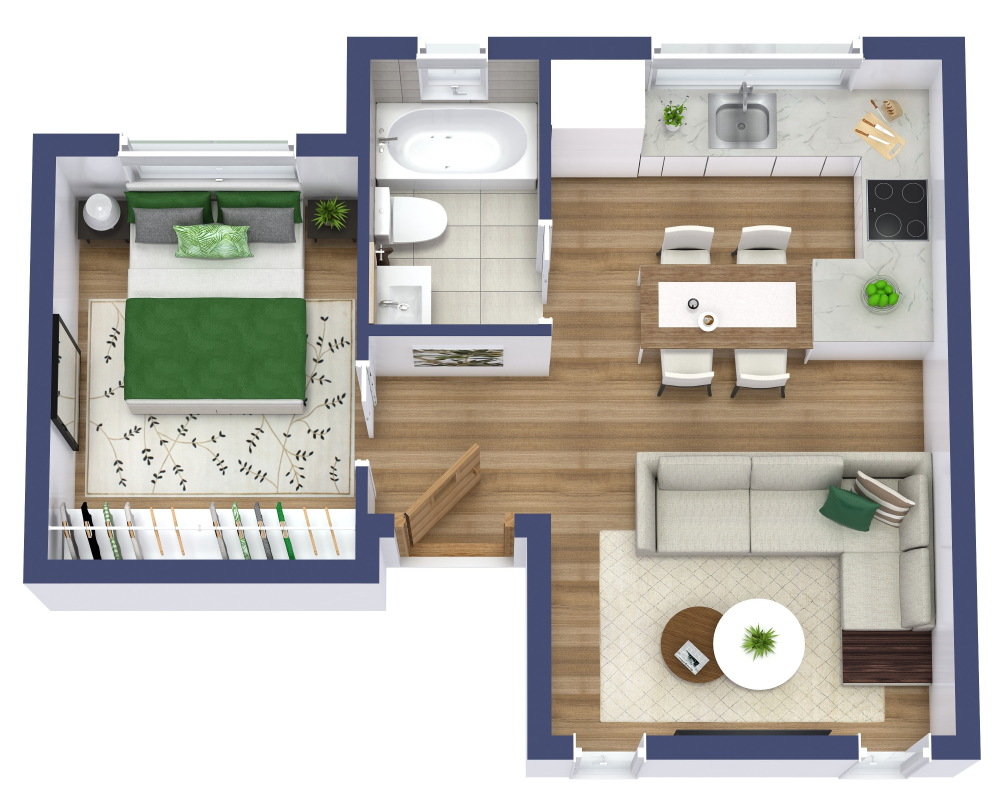Tiny House Plan Examples
The Tiny House Movement is gaining popularity, with the appealing idea of living a simpler life in a simpler place. A “tiny house” is a very small dwelling, usually less than 400 square feet (about 40 m2). There are two main types of tiny homes: those built on a permanent foundation, or those built on wheels.
Read More
Know the Requirements for Your Area
If you are considering a tiny house, one of the first things to do is find out the rules in your local city or county. Some areas specify a minimum size for a home that is built on a foundation. For example, in the US, some states require a home to be no smaller than 150 sq ft (about 15 m2). Other states calculate space requirements by the number of people who will reside in the unit. There may also be rules related to minimum ceiling heights, requirements for windows in certain locations to meet emergency exit rules, and more.
Since a house built on a trailer is not on a permanent foundation, it can allow you to get around minimum size requirements and other building and zoning codes - you just need a legal place to park it. In terms of parking, a tiny house on wheels is generally considered an RV or Recreational Vehicle. In terms of size, however, trailer-based tiny homes do have maximum permitted width, height, and length so that they can be safely driven down the road.
The bottom line - as tiny homes grow in popularity, many cities and counties are adjusting their housing regulations to cover this trend, so it’s important to get current information for your area.
Benefits of Tiny House Living
There are many benefits to tiny house living. An obvious one is the lower financial cost compared to building a larger home. Not only can the initial outlay be less (both for the house and the smaller amount of land), the ongoing utility bills, such as heating and cooling, should also be lower. The good news here - more time & money to spend on the endeavors you most enjoy.
By using less energy to heat and light your home, and fewer materials to build your home, you are also contributing to the health of the planet. Committing to the tiny house life means letting go of a lot of belongings, which can lead to a simpler, less stressful life. A small home also means less space to clean, freeing you up to pursue hobbies, sports, and other activities.
Layout Considerations
As you review tiny house plans, think about what is most important to you. Since tiny houses are small, you’ll likely need to prioritize which areas get more space, and which are more compact. If you love to cook, make sure the kitchen will suit your needs. If you work from home, make sure you have a more generous living room space or a place for a dining table that could double duty as a desk. Many tiny houses don’t have separate bedrooms but instead, have a sleeping space or a loft. If a separate bedroom is important to you, look for layouts that give extra attention to that area.
How to Make the Most of Your Space
In a tiny house, every room and piece of furniture should be carefully planned. Make sure that every item has a purpose, and if possible, multiple purposes. For example, build or buy a platform bed with storage underneath, or choose a pull-down Murphy bed. Every side table should have drawers, a cabinet, or shelves. You can find clever fold-out or expandable dining tables. If your tiny house has a loft, even the stairs can have storage space below them. Finally, as you plan your kitchen, be sure to include upper shelves or cabinets to maximize storage.
Building a Tiny House
Many tiny house fans are DIYers. You may find a floor plan you like and have the skills to do all or part of the work, bringing in contractors for areas in which you don’t have expertise. Another popular option is to look at kits, or pre-fab tiny homes, which are built offsite and delivered in several pieces. Whichever option you choose, you’ll soon be able to enjoy the tiny house lifestyle.